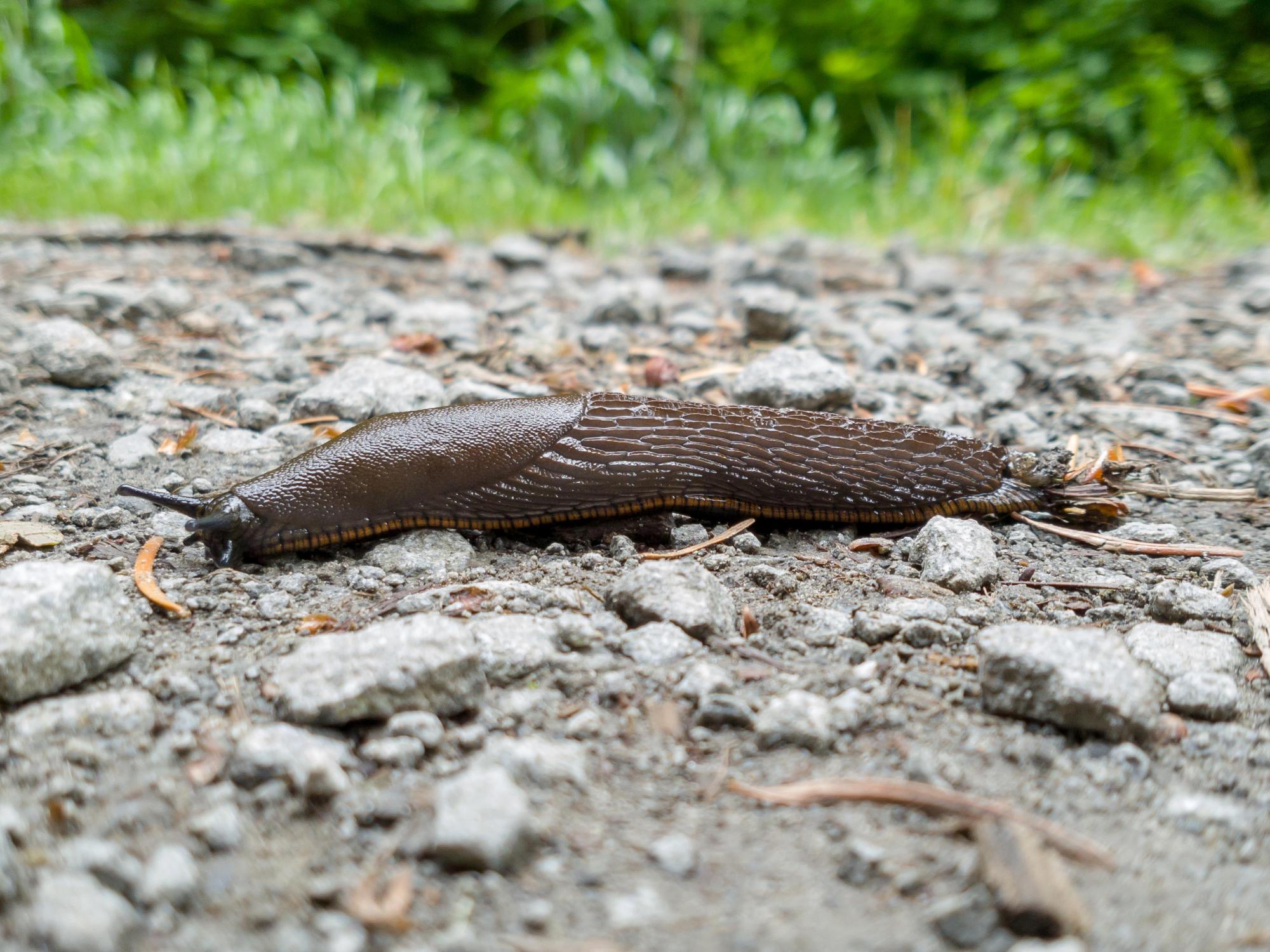Just when you think your garden work is done for the season, out crawl those pesky slugs. If you want to avoid the spring onslaught of baby slugs, you’ve got work cut out for you now.
“What slugs want is a place that’s warm and moist,” said Claudia Groth, an Oregon State University Extension Service Master Gardener. “That’s why spring and fall is when they’re most active. They’ll be coming out soon to lay eggs.”
Slugs aren’t crazy about winter and summer. They bail from cold or hot weather. But fall and spring are agreeable seasons for slugs. In the perfect conditions of autumn when the heat starts to wane and the first rains come, the mollusks lay eggs in clusters called clutches, according to Groth, a horticulturist who has made slugs her specialty.
The eggs mature slowly over winter and hatch fairly rapidly. The fast-growing slugs wait it out, showing up in spring to scrape and shred plant leaves with tongues lined with thousands of tiny, extremely sharp teeth. Many slugs overwinter as full-sized critters ready to go in spring.
Get primed for slimy battle with these tips from the Extension Service:
- Water in the morning. “If you water in the evening, it’s wet until early in the morning and you’ve given them the best environment when they come out at night hungry,” she said.
- Put out beer traps. Use a pie plate or bury a plastic yogurt or margarine container almost to the rim. Pour in beer. Remove dead slugs daily and refill with beer.
- Don’t use salt. It can build up in the soil and damage plants.
- Attract predators such as frogs, ground beetles and, yes, snakes.
- Create an artificial hiding place by placing a board in their favorite places. To make it especially attractive, grind up lettuce and brewer’s yeast (not baker’s yeast) and put that under the board. In the morning, lift the board and remove slugs. Drop them in a bucket of soapy water.
- Go out at night with a flashlight or head lamp and handpick them.
- Get a duck, which will make a quick dinner out of slugs, but be sure to check with your city first. Some don’t allow them and there are restrictions.
- Tape a wide (3-4 inches) strip of copper around the top of a pot or the top edge of a raised bed.
- Also, you can use bait. But you should carefully consider them if you have pets. There are two types. One is a synthetic bait that contains metaldehyde, which is toxic to humans and can be fatal to dogs if eaten in large amounts. The other contains iron phosphate, which is considered very low in toxicity, according to the National Pesticide Information Center at OSU, but has been known to sicken dogs in high amounts. It can be used in organic vegetable gardens. When baiting, scatter rather than making piles or bands. “If you use piles or bands,” Groth explained, “slugs can go right by. If you scatter, they’re likely to encounter it.” Also, be sure to look on the label to see how much to use per square foot. It’s a lot less than most people think. Using more is not better.
For more information, check out Extension’s publication on How to Control Slugs in Your Garden in English and Spanish.

